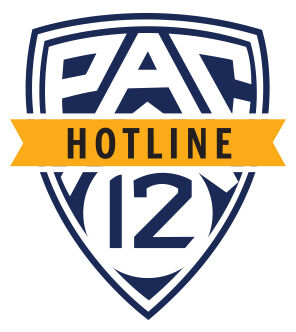Unless the process gets derailed by a once-in-a-century global pandemic, the Pac-12 typically releases its football schedule by December of the previous year.
This season’s lineup, for example, was unveiled on Dec. 16, 2021.
Don’t expect the 2023 edition before the turn of the calendar, however.
“We hope to get it out relatively quickly,” Merton Hanks, the Pac-12’s senior associate commissioner for football operations, told the Pac-12 Hotline on Wednesday. “There are some things we’re taking another look at, so we’ve asked the athletic directors for more time.”
Hanks declined to reveal specifics of the snags, but he offered a clue.
“It’s difficult because there are so many good teams,” he said.
Half the conference was represented in the final College Football Playoff rankings of the 2022 season — the highest percentage in the Power Five — and there’s no sign of momentum abating.
If anything, the Pac-12 could be stronger next fall with the return of several marquee quarterbacks (USC’s Caleb Williams, Oregon’s Bo Nix and Washington’s Michael Penix, to name three) and the arrival of a certain high-profile head coach (Deion Sanders) in Boulder.
“The situation there speaks for itself,” Hanks said.
The conference office is paying close attention to personnel developments as it pieces together the master schedule for 2023 — the final year in which the rotation of games will reflect the old North/South divisional format.
Hanks and his team aren’t interested in creating a schedule that favors one team, or group of teams. Rather, the goal is to craft a lineup that best suits the collective.
“The athletic directors have been clear with us,” he said. “They want schedule parity, not us putting our finger on the scale, so to speak.”
That’s not an easy task given the other priority: Don’t place teams at a competitive disadvantage.
Hanks offered two examples:
USC is scheduled to visit Notre Dame next October, as it always does in odd years.
While the Pac-12 office avoids placing its “finger on the scale” with regard to intra-conference results, it has a clear rooting interest in out-of-league games.
Sending the Trojans on the road the previous Saturday would not set them up for success in South Bend. Nor would matching them against Utah, for instance.
Preparation time must be similar in advance of rivalry games.
“I can’t send one of the Washington schools to play in Arizona the week before the Apple Cup,” Hanks said, “and have the other one playing at home.
“It’s not our job to pick winners. It’s our job to make the best schedule for the collective and mitigate obvious negatives.”
For years, the conference office seemingly ignored the “obvious negatives.”
It created schedules that forced teams to play Saturday road games in advance of Friday road games.
It asked teams to play back-to-back road games, with the second game against a home team coming off a bye.
Once, it asked Cal to play USC in the Coliseum on short rest while the Trojans were given two weeks to prepare.
The competitive disadvantages undermine success and, in several cases, have contributed to the Pac-12 falling out of the playoff race at an embarrassingly early date.
Those issues have been eradicated under Hanks — he became head of football operations in September 2020 — but his flexibility is somewhat limited due to:
The longstanding policy of blocking out the first three weeks of the season for nonconference matchups, which effectively leaves Hanks with 10 weeks to slot nine league games.
The Stanford and USC dates with Notre Dame, which fall in the middle of October (in South Bend) and on Thanksgiving weekend (on the West Coast).
Stadium access. There are occasions, Hanks said, when a venue simply isn’t available because of a pre-booked event, construction or another conflict.
The 2022 schedule was backloaded, with a slew of high-profile games in November. That format created compelling viewing and contributed to six teams (USC, UCLA, Oregon, Oregon State, Washington and Utah) making the final CFP rankings.
Given the returning personnel, those six should be strong again.
Add the expected improvement from Colorado and Arizona State, which experienced in-season coaching changes, and Hanks believes the Pac-12’s bottom tier will be stronger in 2023.
While the conference office doesn’t “pick winners,” it has zero interest in creating losers — in generating merciless schedules that undercut opportunities for success at the highest level.
“When we put the schedule together,” he said, “there are no places to hide.”
The Power 5 college football conference title games kick off this weekend. Szvetitz gives his predictions in the ACC, Big 12, Big Ten, Pac-12 and SEC matchups.





